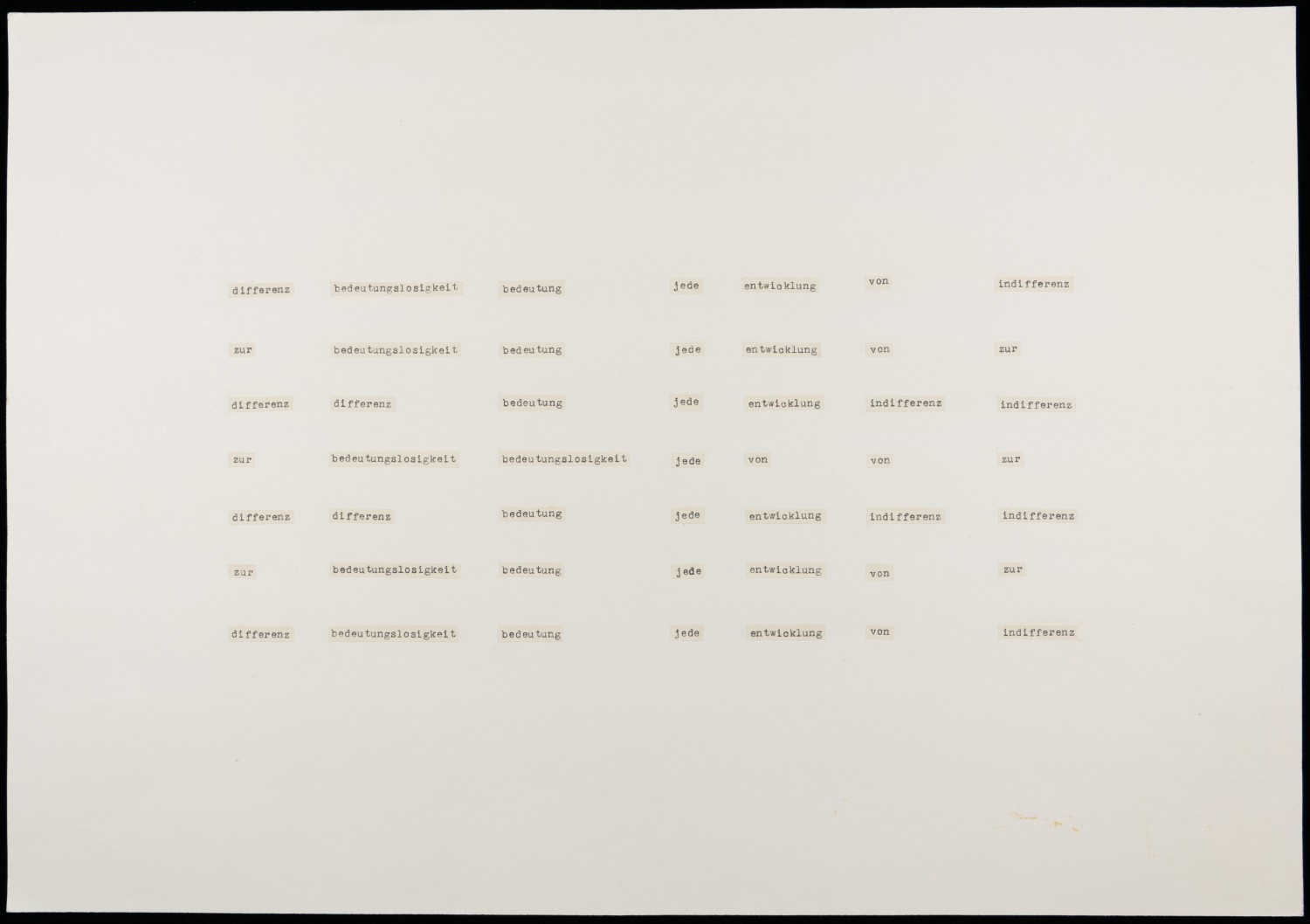










opto-kinetic works








In 1969 Reiner Kallhardt and Dietrich Mahlow invited Greenham to include her work in the upcoming 1970 Venice Biennale. At the time Greenham was moving away from visual work and into a linguistic space, and her plans for the exhibition went through a number of iterations. An earlier version of the piece had been shown previously at the Nürnberg Biennale and was developed further to be exhibited at Venice. In the catalogue for the 1970 Venice Biennale is a black and white reproduction of Greenham’s typographic print, bewegen konkret, which can be considered a bridge between her optic and linguistic explorations, and here at the Kunstverein this piece is installed on a platform overlooking the downstairs atrium space. This two-colour neon silkscreen reproduction of bewegen konkret is displayed with a colour transparency, as originally intended by Greenham, and is presented opposite a newly digitised standard 8 film of colour tests made at the same time.
Following Greenham’s move to Paris in 1964 she became involved with the Groupe de Recherche d’Art Visuel (GRAV) and the Visuel Nouvelle Tendance (New Tendency) movement. During this period Greenham created a number of kinetic light objects and op art collages, which were exhibited in a series of groundbreaking shows whose documents are included in the vitrines in the left hand side of the atrium space. In 1965, her work study of differentiation and identity in visual perception: three variations (1964) was displayed in the hugely influential exhibition The Responsive Eye at the Museum of Modern Art in New York, a show that laid the foundations for the Op Art movement. Greenham’s work at this time focused on what she called colour-interacting research, exploring the differentiation of colours and their reactions on each other. A version of this piece, titled study of differentiation and similarity in visual perception, 3 variations and programmed structure (1965–68) is installed at the Kunstverein on loan from the collection at ZKM, Karlsruhe. In An Art of Living Greenham describes study of differentiation and similarity in visual perception as being ‘conceived to make observers aware of their own spatial relationship to it’. This work sits alongside a unique lightbox entitled strukturen in bewegung, created in 1967 by Greenham, which includes an automatic light switching system. strukturen in bewegung is on loan from Edition & Galerie Hoffmann, and is a piece that was never put into full production but has been restored specifically for this exhibition.
The art historian and curator Frank Popper was a notable advocate of Greenham’s op artwork, including her in a series of exhibitions he organised (Lumière et mouvement, 1967, Musée d‘Art Moderne de la Ville de Paris and Cinetisme Spectacle Environment, 1968, Théâtre mobile de la Maison de la Culture, Grenoble) and books he authored (Naissance de l‘Art Cinetique, 1967 and Origins and Developments of Kinetic Art, 1968). In 1969 he invited Greenham to create the installation l’environment luminocinétique in the Paris suburb Montreuil, a work whose full details are still to be discovered.